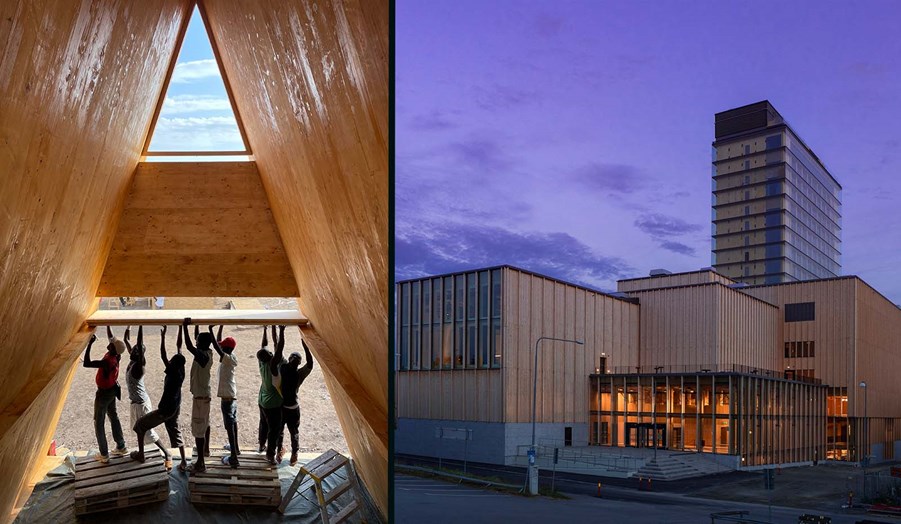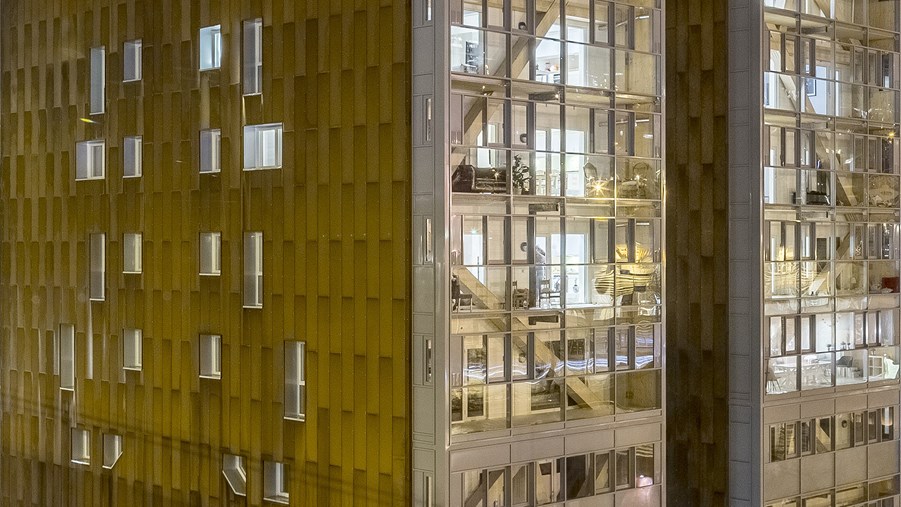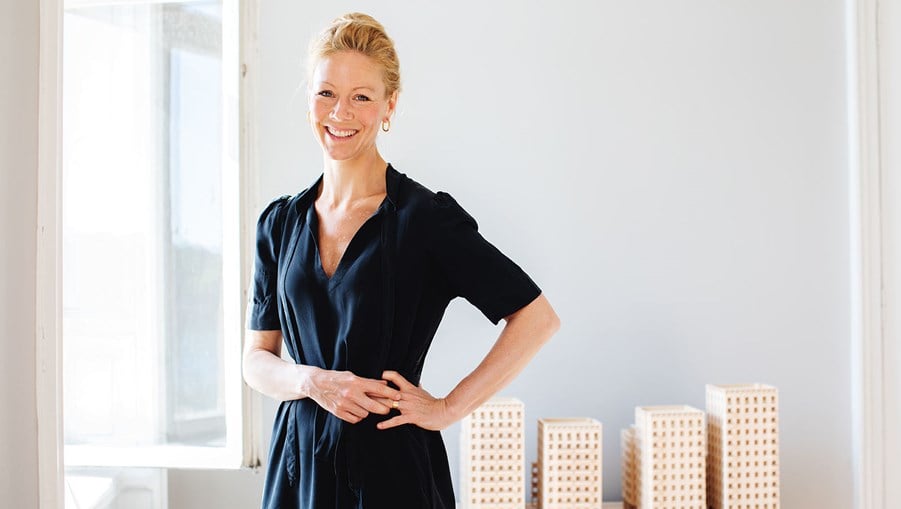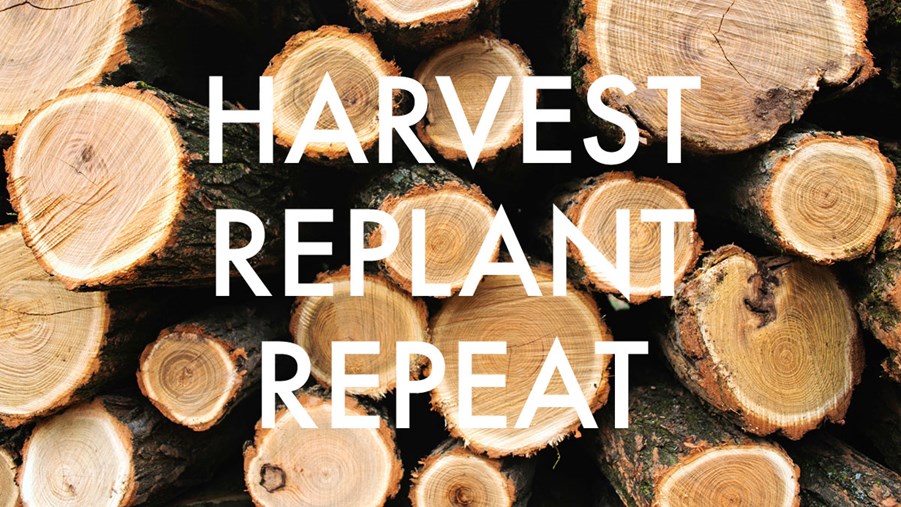
In picture: community hall donated by Setra and Arvet recently took place at the UN settlement in Kalobeyei, Kenya / Sara kulturhus in Sweden, photographer: Sven Burman
Ahead of the COP26 climate summit in Glasgow, large sections of the international wood industry released a joint manifesto, Time for Timber, setting out the climate and environmental benefits of building in wood. A growing interest in wood construction can now be seen in many countries, with climate change as the strongest driver. This autumn, Swedish wood construction has been showcased in a range of contexts around the world, not least in the exhibition Woodlife Sweden.
The autumn promotion of wood construction got off to a flying start with the opening of Sara Kulturhus in Skellefteå on 8 September. The wood-built 20-storey arts centre has gained considerable media attention far beyond Sweden’s borders, with the press tour attracting accredited journalists from The Guardian, Die Zeit and Le Figaro, to name just a few. Sara Kulturhus also features in Woodlife Sweden, a touring exhibition on Swedish architecture in wood that has been a worldwide hit. This autumn it has visited locations on four continents, most recently the Archtober architecture festival in New York, where multiple seminars were held to highlight how architects can help with climate solutions on various scales. Furthermore, New York has recently updated the city’s building regulations to allow the use of mass timber as a framing material in buildings up to 25.9 metres tall (equating to 6–7 storeys).
“We’re seeing enormous advances in the wood construction industry right now, with strong growth and rising interest from builders and project developers around the world. Apartment blocks, schools, bridges, commercial premises, care homes, houses and public buildings are all currently being built in wood. The strongest driver is the pressing need to reduce the climate footprint of the construction sector,” says Susanne Rudenstam, head of the Swedish Wood Building Council.
Woodlife Sweden a global success
Woodlife Sweden is organised by the Swedish Institute and Architects Sweden, in collaboration with Swedish Wood and the Swedish Forest Industries Federation. The purpose of the exhibition is to increase interest in sustainable development and generate international curiosity about Swedish wooden architecture and design. Since their launch in 2016, the exhibition and its predecessor Woodland have visited around 30 countries. The next stop is Turkey on 9–11 November, with events including a digital wood seminar attended by Viveka Beckeman (CEO) and Emma Berglund (Forest Director). Requests to host Woodlife Sweden have also come in from Finland, Germany and Hong Kong, among others.
“Interest in wooden architecture is continuing to grow for climate reasons. More and more countries are introducing regulations aimed at transitioning to sustainable construction. France, for example, has decided that 50 percent of all public buildings should be made of wood from as soon as 2022, and 30 percent of the raw material must come from France. These are exciting times for the wood industry and for those architects who know how to build in wood,” states Fredrik Drotte, Vice Chair of Architects Sweden.
Partnership with the UN
Swedish wood construction is also making an impression in Africa. The official opening of a community hall donated by Setra and Arvet recently took place at the UN settlement in Kalobeyei, Kenya. The project is a joint venture with the United Nations Human Settlements Programme (UN-Habitat).
“The UN has realised that, right from the start, they need to think about sustainable urban development and more permanent solutions for their settlements. And when it comes to finding sustainable and effective solutions, wood – a renewable building material – is of real interest,” says Sandra Frank, co-founder and Executive Vice President Marketing & Global Movement at the housing development company Arvet, which initiated the project.
The Industrialized Wood-based Construction Conference (IWBC) on 26–27 October saw Susanne Rudenstam participate in a discussion on how industrial wood construction can help to reduce global carbon emissions. She also led a seminar on local and regional wood construction strategies, which was organised by Smart City Sweden during the Dubai World Expo on 2 November.
“The latest report from the UN Intergovernmental Panel on Climate Change (IPCC) makes it abundantly clear that we cannot continue with business as usual. The construction sector has a fantastic opportunity to take a new path and reduce its climate impact by building more in wood,” concludes Susanne Rudenstam.


